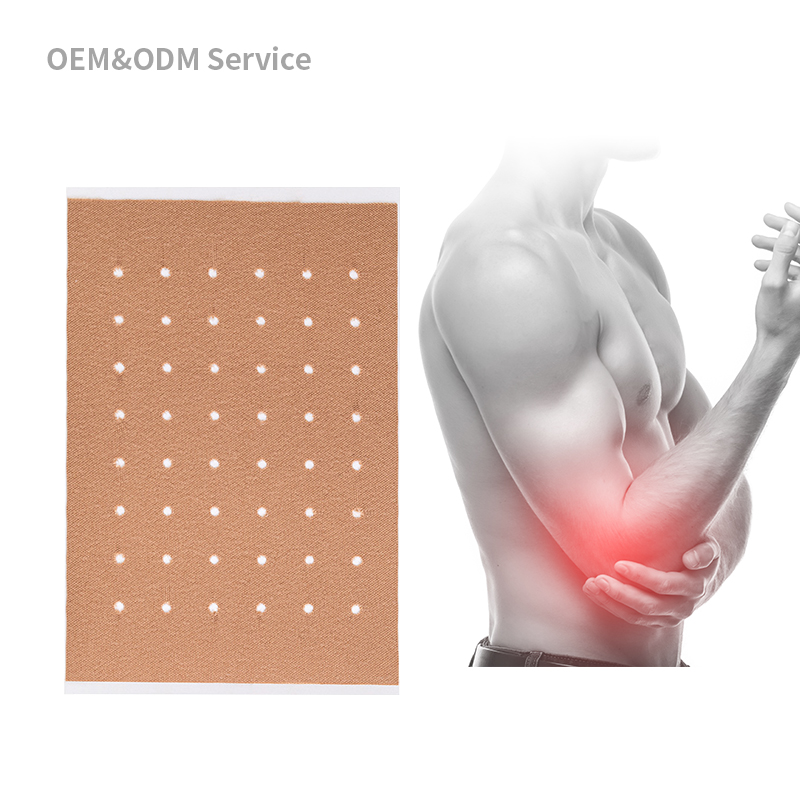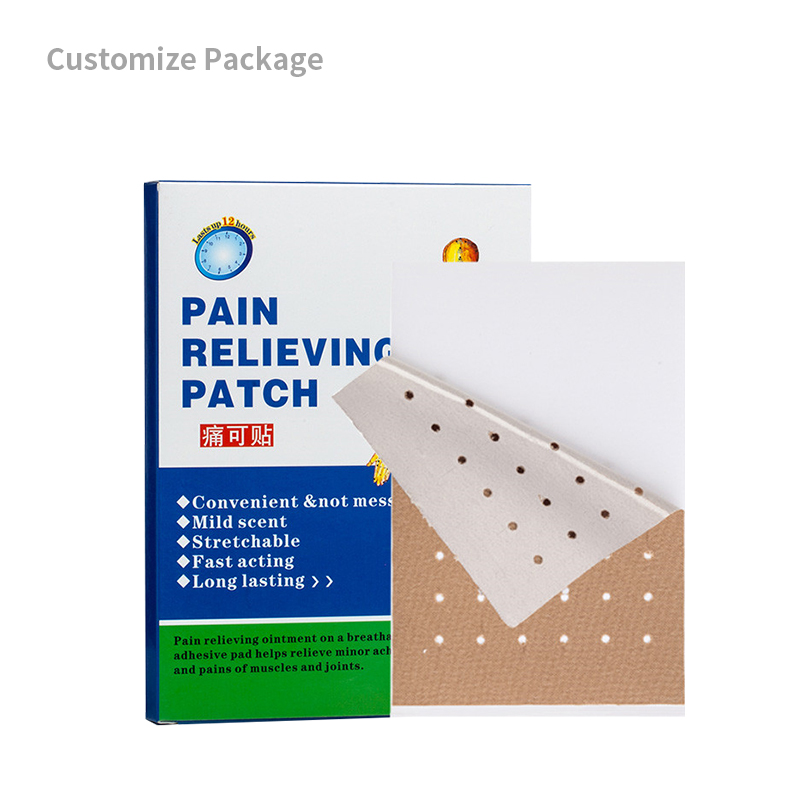Why Sustainability is Crucial in Herbal Pain Relief Patches Manufacturing
In today’s increasingly eco-conscious world, sustainability has become a central focus across various industries, including the manufacturing of herbal pain relief patches. As consumers demand more environmentally friendly products, manufacturers and brands are adapting their practices to meet these expectations. The shift towards sustainable practices is not just a trend but a necessary evolution for the industry. This article explores why sustainability is important in Herbal Pain Relief Patches Manufacturing, the role of Herbal Pain Relief Patches OEMs, and how sustainability impacts the entire production and supply chain.

1. The Growing Consumer Demand for Sustainable Products
The Rise of Eco-Conscious Consumers
The modern consumer is more informed and environmentally aware than ever before. With the increase in global awareness about climate change, pollution, and resource depletion, there is a growing demand for products that are not only effective but also sustainable. This trend is evident in the herbal pain relief market, where consumers are actively seeking out products that align with their values.
The Impact on Herbal Pain Relief Patches
Herbal Pain Relief Patches are a popular choice for natural and non-invasive pain relief. However, consumers are now looking beyond just the product's effectiveness; they want to know that the products they use are made with sustainable practices. This includes everything from the sourcing of herbal ingredients to the packaging materials used. As a result, Herbal Pain Relief Patches Manufacturers must prioritize sustainability to remain competitive in the market.
2. Sustainable Sourcing of Herbal Ingredients
The Importance of Ethical Sourcing
One of the most critical aspects of sustainability in Herbal Pain Relief Patches Manufacturing is the sourcing of herbal ingredients. Ethical and sustainable sourcing ensures that the raw materials used in the patches are harvested in a way that does not harm the environment or deplete natural resources. This practice also supports fair trade and helps maintain biodiversity.
Benefits for Manufacturers and Consumers
For Herbal Pain Relief Patches Manufacturers, sustainable sourcing can enhance their brand image and build trust with consumers. By using sustainably sourced ingredients, manufacturers can appeal to eco-conscious consumers who are willing to pay a premium for products that align with their values. Additionally, sustainable sourcing can lead to long-term cost savings by ensuring a stable supply of raw materials.
3. Eco-Friendly Manufacturing Processes
Reducing Environmental Impact
Sustainability in manufacturing goes beyond sourcing ingredients; it also involves adopting eco-friendly production processes. Herbal Pain Relief Patches OEMs are increasingly investing in green technologies that reduce energy consumption, minimize waste, and lower greenhouse gas emissions. These practices not only benefit the environment but also improve the overall efficiency and cost-effectiveness of the manufacturing process.
Innovations in Sustainable Manufacturing
Herbal Pain Relief Patches OEMs are at the forefront of adopting innovative technologies that promote sustainability. For instance, some manufacturers are using renewable energy sources, such as solar or wind power, to run their production facilities. Others are implementing closed-loop systems that recycle water and reduce waste. These innovations help manufacturers produce Custom Herbal Pain Relief Patches that are both effective and environmentally responsible.
4. Sustainable Packaging Solutions
The Shift Towards Eco-Friendly Packaging
Packaging is a significant concern for sustainability, especially in the herbal pain relief market. Traditional packaging materials, such as plastic, contribute to environmental pollution and are not biodegradable. To address this issue, Herbal Pain Relief Patches Suppliers are shifting towards eco-friendly packaging solutions that are recyclable, compostable, or made from sustainable materials.
Consumer Preferences and Regulatory Pressures
Consumers are increasingly demanding sustainable packaging, and this preference is influencing the choices that manufacturers make. In addition, regulatory pressures are pushing manufacturers to reduce their environmental footprint by adopting sustainable packaging practices. As a result, offering Private Label Herbal Pain Relief Patches with eco-friendly packaging has become a key differentiator for brands in the market.
5. The Role of Herbal Pain Relief Patches OEMs in Sustainability
Collaboration for Sustainable Solutions
Herbal Pain Relief Patches OEMs play a crucial role in driving sustainability in the industry. By collaborating with brands, OEMs can develop and implement sustainable practices throughout the entire production process. This includes everything from the selection of raw materials to the design and production of the final product.
Customization and Sustainability
Customization is another area where OEMs can support sustainability. By offering Custom Herbal Pain Relief Patches that are tailored to specific consumer needs, OEMs can help reduce waste and overproduction. This approach ensures that only the necessary amount of product is produced, minimizing the environmental impact.
6. Economic and Social Benefits of Sustainability
Long-Term Cost Savings
While the initial investment in sustainable practices may be higher, the long-term economic benefits are significant. Sustainable manufacturing processes often lead to increased efficiency, reduced waste, and lower energy costs. For Herbal Pain Relief Patches Manufacturers, this translates into cost savings that can improve profitability and competitiveness in the market.
Social Responsibility and Brand Reputation
In addition to the economic benefits, sustainability also enhances a brand’s social responsibility. Consumers are more likely to support brands that demonstrate a commitment to ethical practices and environmental stewardship. By prioritizing sustainability, Herbal Pain Relief Patches Suppliers can build a strong brand reputation and foster customer loyalty.
7. Challenges in Implementing Sustainable Practices
Balancing Sustainability and Profitability
One of the main challenges in implementing sustainable practices is balancing sustainability with profitability. While sustainability offers long-term benefits, the initial costs can be high, especially for small and medium-sized manufacturers. It requires careful planning and investment to ensure that sustainable practices do not compromise profitability.
Navigating Regulatory Requirements
Another challenge is navigating the complex regulatory landscape surrounding sustainability. Different regions have varying regulations regarding environmental impact, waste management, and sustainable sourcing. Herbal Pain Relief Patches Manufacturers must stay informed about these regulations and ensure that their practices comply with local and international standards.
8. The Future of Sustainability in Herbal Pain Relief Patches Manufacturing
Increasing Adoption of Green Technologies
The future of Herbal Pain Relief Patches Manufacturing will likely see an increasing adoption of green technologies. Innovations such as biodegradable materials, renewable energy sources, and eco-friendly production processes will continue to shape the industry. As these technologies become more accessible and cost-effective, more manufacturers will be able to integrate sustainability into their operations.
Consumer Education and Awareness
Consumer education will also play a vital role in the future of sustainability. As consumers become more aware of the environmental impact of their choices, they will increasingly demand sustainable products. Herbal Pain Relief Patches Suppliers that invest in educating their customers about the benefits of sustainability will be better positioned to succeed in the market.
Conclusion
Sustainability is no longer just an option; it is a necessity for Herbal Pain Relief Patches Manufacturers and the broader herbal pain relief market. From the sourcing of herbal ingredients to the adoption of eco-friendly manufacturing processes and sustainable packaging solutions, every aspect of production must be considered through the lens of sustainability. Herbal Pain Relief Patches OEMs and Suppliers have a unique opportunity to lead the industry towards a more sustainable future by embracing green technologies, ethical practices, and innovative solutions. As consumer demand for sustainable products continues to grow, those who prioritize sustainability will not only contribute to a healthier planet but also gain a competitive advantage in the market.
Related Questions and Answers
Q1: What are the benefits of sustainable sourcing in Herbal Pain Relief Patches Manufacturing?
A: Sustainable sourcing ensures that raw materials are harvested in an environmentally friendly manner, supports fair trade, and helps maintain biodiversity, which enhances brand reputation and builds consumer trust.
Q2: How can Herbal Pain Relief Patches OEMs contribute to sustainability?
A: OEMs can contribute by adopting green manufacturing practices, offering eco-friendly packaging, and providing customized products that reduce waste and overproduction.
Q3: What challenges do manufacturers face in implementing sustainable practices?
A: Challenges include balancing the initial costs of sustainable practices with profitability, navigating complex regulatory requirements, and ensuring consistent quality and compliance.
Q4: Why is sustainable packaging important in the herbal pain relief market?
A: Sustainable packaging reduces environmental pollution, meets consumer demand for eco-friendly products, and complies with increasing regulatory pressures.
Q5: What role does consumer education play in promoting sustainability?
A: Consumer education raises awareness about the environmental impact of products, encouraging more informed purchasing decisions and increasing demand for sustainable options.






